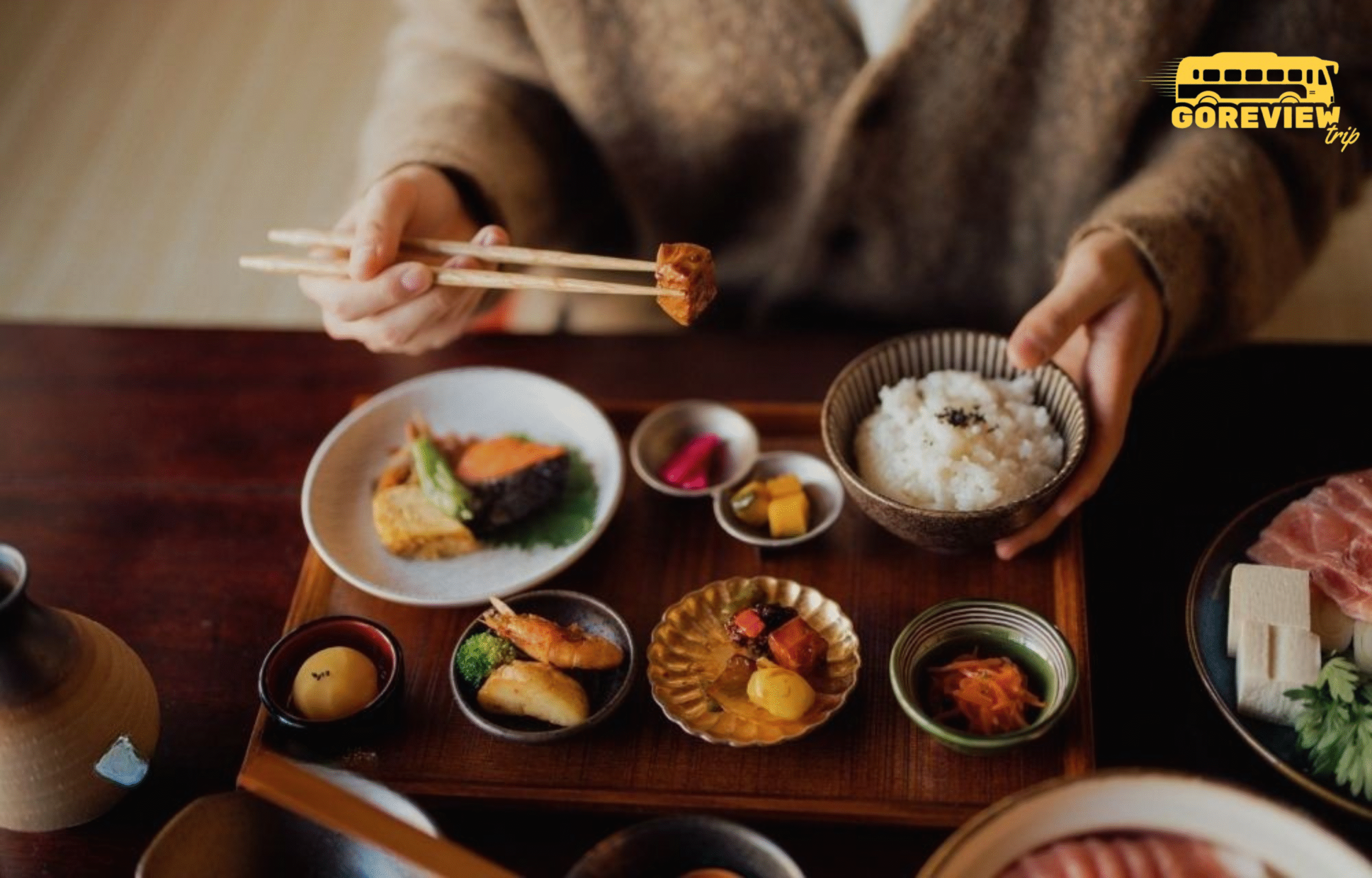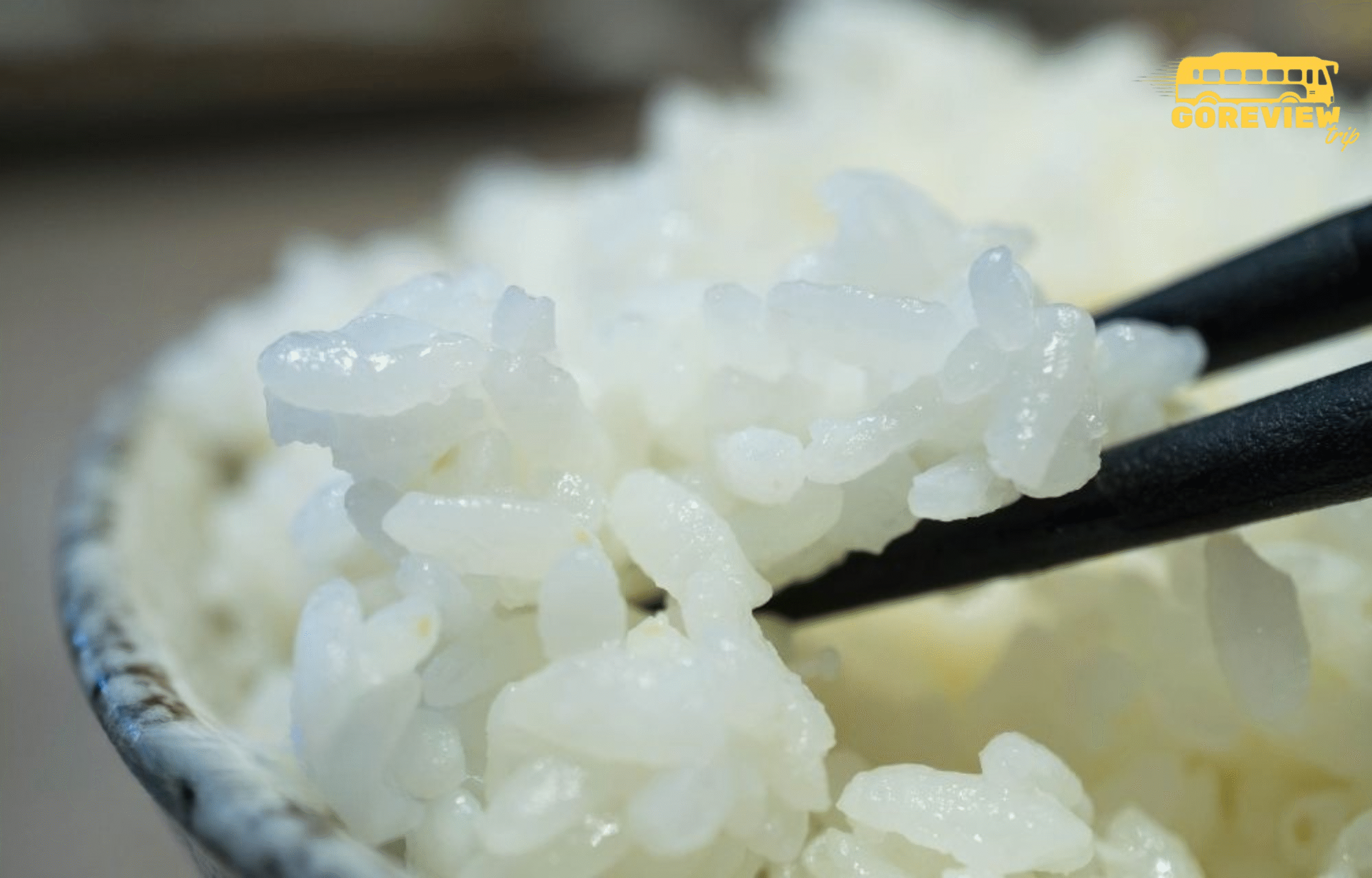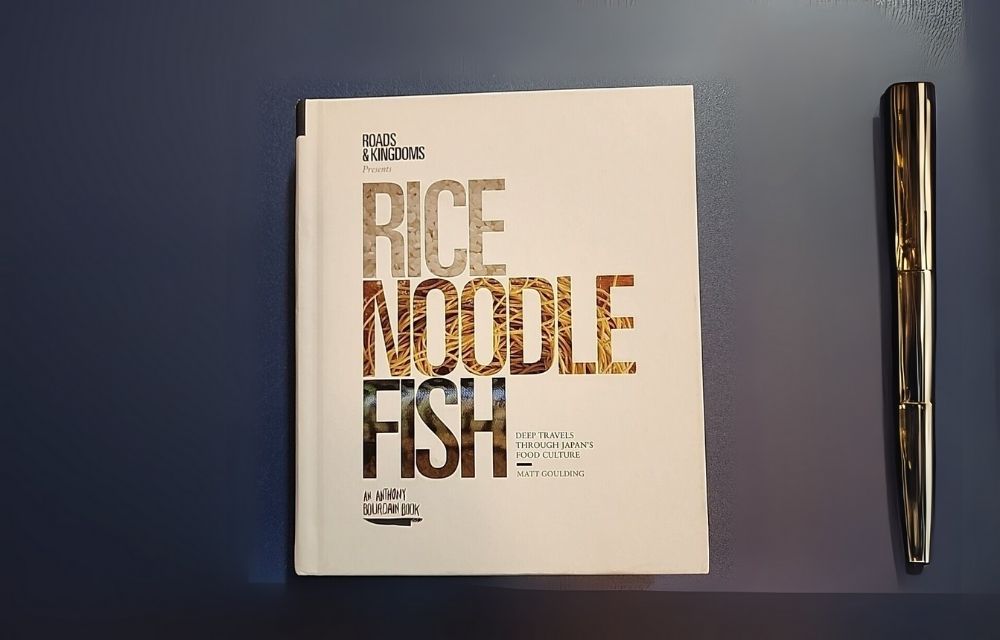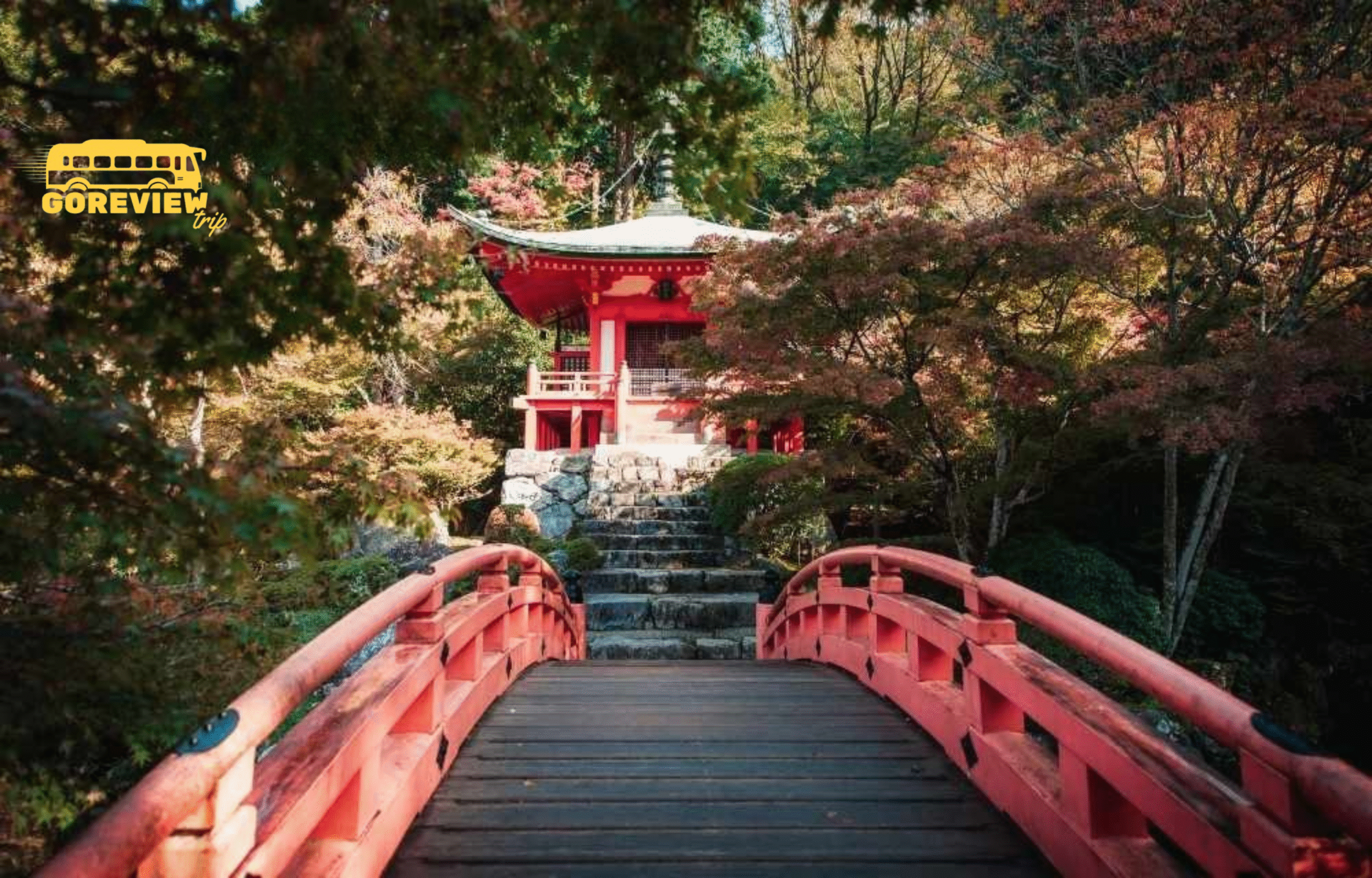Have you ever held a book in your hands that felt less like an object and more like a passport? A book that promised not just a story, but an experience? That’s the feeling I got when I first picked up Matt Goulding’s masterpiece, “Rice, Noodle, Fish.” The subtitle, Deep Travels Through Japan’s Food Culture, isn’t just a catchy phrase; it’s a profound promise. And let me tell you, it’s a promise the book delivers on, page after delicious page.
I’ve always believed that the fastest way to the heart of a culture is through its stomach. You can visit all the temples and museums you want, but sharing a meal, understanding its origins, and appreciating the hands that made it—that’s where the real connection happens. For me, Japan was a beautiful, intricate puzzle I was desperate to understand. And this book, this incredible guide, became my key.
So, I want to invite you on a journey. Forget about stuffy guidebooks and top-ten lists for a moment. Instead, let’s embark on our own Rice Noodle Fish deep travels through Japan’s food culture. We’ll follow in the footsteps of a master storyteller, unpack the soul of Japanese cuisine, and discover why in Japan, a simple bowl of rice is never just a simple bowl of rice.
Grab a cup of tea (or maybe some sake?), get comfortable, and let’s get lost in the world of flavor, tradition, and obsession that is Japanese food.
Table of Contents
Before We Eat: Who is Our Guide on This Journey?
To appreciate the journey, you have to know your guide. The narrator of Rice, Noodle, Fish is Matt Goulding, a food writer and co-founder of the phenomenal Roads & Kingdoms. What makes him the perfect guide for this adventure is that he’s not a distant, academic observer. He’s one of us, but with a poet’s soul and a journalist’s relentless curiosity.
Goulding writes with a style that’s both electrifyingly vivid and deeply human. He’s not just describing a bowl of ramen; he’s plunging you headfirst into the steam, the noise of the slurping, the grizzled focus of the master behind the counter. He captures the feeling of being there. He’s a traveler who has fallen so profoundly in love with Japan that his affection radiates from every sentence.

He’s spent years exploring the country’s culinary landscape, from the fluorescent glow of a 7-Eleven to the hushed reverence of a three-Michelin-star sushi counter. He’s not a chef, which makes him relatable. He’s a perpetual student, asking the questions we would ask, and his sense of wonder becomes our own. Understanding his voice is key to understanding why this book is less a manual and more a beautifully written travelogue for the hungry and the curious.
The Three Pillars: The Foundation of a Nation’s Diet
Goulding brilliantly structures his exploration around the three pillars of the Japanese diet. These aren’t just ingredients; they are cultural institutions, the bedrock upon which the entire culinary universe of Japan is built. Embarking on the Rice Noodle Fish deep travels through Japan’s food culture means understanding these titans first.
1. RICE (The Soul of Japan)
Before there was sushi, before there was ramen, there was rice. Gohan (cooked rice) is so central to the cuisine that the word itself is also the general term for “meal.” Breakfast, lunch, and dinner can all be described with the word gohan.
Goulding doesn’t just talk about rice as a side dish; he presents it as the silent, revered hero of the Japanese table. He takes us on a journey that starts in the emerald-green rice paddies, where farmers work with a near-spiritual devotion. He explains the importance of shinmai, the “new rice” harvested in autumn, which is prized for its fragrance and delicate sweetness.
Imagine this scene, beautifully captured in the book’s ethos: You’re at a high-end sushi restaurant in Ginza. The master, a stoic man who has dedicated sixty years of his life to his craft, spends the first ten minutes of his day just tasting the rice. Not the fish, the rice. He’s checking the texture, the temperature, the seasoning of the shari (sushi rice). He knows, with an instinct born of decades of repetition, that the fish is only as good as the rice it rests upon. The rice is the soul.
Goulding shows us that rice is the canvas for everything else. It’s the starchy, comforting base for a savory curry, the essential partner to a piece of grilled fish, and, through the magical process of fermentation, the source of sake, Japan’s iconic national beverage. He teaches us to respect the rice, to see it not as filler, but as the main event.
2. NOODLE (The Slurping, Beating Heart of the City)
If rice is the quiet soul, noodles are the loud, joyful, beating heart of Japan. Goulding dives headfirst into the glorious, complex world of noodles, a universe of textures, broths, and traditions that are as diverse as Japan itself.
This part of the Rice Noodle Fish deep travels through Japan’s food culture is a sensory explosion.
Picture yourself with Goulding: You push aside the noren curtain of a tiny, ten-seat ramen shop in Shinjuku’s Omoide Yokocho (“Piss Alley”). The air is thick with the scent of pork and dashi. Steam fogs your glasses. Everyone is hunched over their bowls, heads down, in a collective ritual of slurping. And slurping isn’t just permitted; it’s encouraged! It’s a sign of enjoyment, a way to cool the noodles and aerate the broth to appreciate its full flavor.
Through his storytelling, we meet the ramen masters, obsessive artisans who might spend 18 hours a day perfecting their tonkotsu (pork bone) broth until it’s a creamy, collagen-rich elixir. We learn the subtle differences between:
- Ramen: The undisputed king. Chinese in origin but quintessentially Japanese, with endless regional variations, from the miso-based ramen of Sapporo to the rich tonkotsu of Fukuoka.
- Udon: Thick, chewy wheat noodles that are the ultimate comfort food, often served in a light, clear dashi broth.
- Soba: Buckwheat noodles with a nutty, earthy flavor. They can be served hot in a soup or cold with a dipping sauce (zaru soba), a refreshing and elegant meal, especially in the summer.
Goulding shows us that a bowl of noodles is a microcosm of Japanese life. It can be a quick, democratic lunch for a salaryman or an art form perfected over a lifetime. It’s the food of the people, and it’s spectacular.
3. FISH (The Artistry of the Ocean)
The final pillar is fish. As an island nation, Japan’s destiny has always been tied to the sea. But their relationship with fish transcends mere sustenance; it is an art form, a science, and a philosophy all rolled into one.
The book takes us deep into this world, starting with the heart-stopping, organized chaos of the old Tsukiji (now Toyosu) fish market. It’s here that the reverence for the ocean’s bounty is most palpable. We see the famous tuna auctions, where a single bluefin can sell for tens of thousands of dollars, handled with the care a museum curator would give a priceless statue.
This is where we truly understand seasonality. In the West, we’re used to getting whatever we want, whenever we want it. In Japan, true connoisseurs eat what the ocean provides right now. Certain fish are only available for a few precious weeks a year, and their arrival is eagerly anticipated.
Of course, the pinnacle of fish culture is sushi and sashimi. Goulding demystifies this world, particularly the sacred experience of omakase (“I leave it up to you”).
Imagine you’re at the counter: There are no menus. You have put your complete trust in the sushi master, the shokunin. He places a single, perfect piece of nigiri in front of you. He might tell you what it is, where it’s from, and perhaps even suggest “no soy sauce.” Each piece is a carefully constructed bite, a perfect marriage of fish, rice, and a tiny dab of wasabi, designed to be eaten in a specific sequence to build a crescendo of flavor. This is more than a meal; it’s a performance, a dialogue between you and the chef. A Rice Noodle Fish deep travels through Japan’s food culture isn’t complete without understanding this profound interaction.
Beyond the Big Three: The Delicious “Fourth Pillars”
While rice, noodle, and fish form the book’s structure, Goulding knows that the true magic of Japanese food lies in its incredible breadth. He dedicates significant parts of his journey to the other essential experiences that define the culture.

The World in a Bento Box: Konbini Culture
For many first-time travelers, the biggest culture shock isn’t the temples or the technology; it’s the convenience stores. The konbini (7-Eleven, Lawson, Family Mart) is a Japanese institution, and the food they serve shatters every Western stereotype about gas station snacks.
Goulding writes with genuine love for the konbini, showing it as a place of democratic deliciousness. You can get perfectly fluffy egg salad sandwiches (tamago sando), high-quality onigiri (rice balls) with various fillings, savory fried chicken (karaage), and even surprisingly good bowls of oden. It’s a testament to Japan’s high standards for food at every single level of society.
The Art of the Grill: Yakitori and Izakaya
If sushi is the refined, quiet art form, then yakitori is its loud, fun-loving cousin. We follow Goulding into the smoky, lantern-lit world of the izakaya, Japan’s version of a pub or tapas bar. Here, the vibe is boisterous and communal. The air is filled with the sizzle of meat on a grill and the clinking of beer mugs.
He focuses on yakitori, skewers of grilled chicken, but it’s so much more than that. A true yakitori-ya is a lesson in whole-animal cooking, with skewers of thigh, breast, heart, liver, and even cartilage, all grilled over screaming-hot binchotan charcoal, which imparts a clean, smoky flavor without flames. It’s a place to unwind with friends, share small plates, and experience the joyous, informal side of Japanese dining.
Sweet Endings and Perfect Brews: Wagashi and Kissaten
Japanese cuisine isn’t all savory. The book also guides us through the delicate, beautiful world of wagashi—traditional Japanese sweets. These are not the sugar bombs of the West. They are subtle, often made with rice flour (mochi), sweet bean paste (anko), and seasonal ingredients like cherry blossoms or chestnuts. They are designed to be beautiful, to evoke a season, and to be a harmonious partner to a bowl of bitter matcha tea.
And where to enjoy that tea or a perfect cup of coffee? In a kissaten, the old-school Japanese coffee shop. These are quiet, often moody places that feel frozen in time, where a coffee master might spend ten minutes executing a perfect pour-over. It’s the opposite of the grab-and-go coffee culture; it’s a place for contemplation and a quiet moment.
The Soul of the Food: Understanding Shokunin and Regionality
If you read Rice, Noodle, Fish and only take away one thing, it should be the concept of the shokunin.
There is no perfect English translation. It means “artisan,” but it’s deeper than that. A shokunin is someone who has dedicated their entire life to the mastery of a single craft. It’s a spiritual-level commitment to perfection. The shokunin isn’t doing their job for money or fame; they are doing it because they have a social and moral obligation to work to the absolute best of their ability.
Goulding’s book is a collection of love letters to these shokunin:
- The elderly man who has been grilling eel (unagi) in the same way, in the same tiny shop, for seventy years.
- The tempura master who can tell the exact temperature of the oil just by listening to the sound of the batter hitting it.
- The tofu maker who wakes up at 2 AM every day to create silky, creamy tofu that is a world away from the stuff we get in plastic tubs.
To understand the shokunin is to understand the soul of Japanese cuisine. It’s the pursuit of perfection in repetition. It’s the belief that even the simplest task, done with immense focus and dedication, can become a work of art.
Flowing from this is the importance of regionality. Goulding masterfully shows that there is no such thing as “Japanese food.” There is Tokyo food, Kyoto food, Osaka food, and the food of a thousand other towns and villages. A trip through Japan is a trip through dozens of distinct culinary cultures.
- In Osaka, the mantra is kuidaore (“eat ’til you drop”), and the food is hearty and boisterous, like takoyaki (octopus balls) and okonomiyaki (savory pancakes).
- In Kyoto, the ancient imperial capital, the food is elegant and refined, like kaiseki, a formal multi-course meal that is the height of culinary artistry.
- In Hokkaido, the northernmost island, the seafood is legendary, and the ramen is rich with butter and corn.
- In Fukuoka, on the southern island of Kyushu, the specialty is pork-bone ramen and fresh seafood from the Genkai Sea.
This book is the ultimate argument against culinary generalization. It encourages you to be a curious traveler, to ask “what is the specialty of this town?” and to taste the difference.

Why This Book is More Than Just a Guide
By now, you probably realize that calling Rice, Noodle, Fish a “food book” is like calling the Grand Canyon a “hole in the ground.” It’s so much more than that.
It is a book about people. It’s about the passion and obsession that drive them to create moments of profound beauty on a plate. It’s a book about culture, showing how a nation’s history, geography, and philosophy can be tasted in its food. And most importantly, it’s a book about a different way of seeing the world.
After reading it, you won’t just think about what to eat in Japan; you’ll think about how to eat. You’ll find yourself paying more attention to the texture of your rice. You’ll seek out the small, family-run shops hidden down side alleys. You will understand that the person preparing your food is an artist sharing their life’s work with you. A Rice Noodle Fish deep travels through Japan’s food culture ultimately becomes an internal journey—it changes how you think about food, dedication, and the beauty of simplicity, long after you’ve returned home.
So, if you’re planning a trip to Japan, this book is your essential pre-flight reading. And if you’re not, be warned: after reading it, you will be. It will ignite a fire in you, a deep-seated craving for authenticity and flavor that can only be satisfied by booking a flight and starting a journey of your own.
I truly hope this little tour has inspired you. The world of Japanese food is vast, intricate, and endlessly rewarding. And with a guide like Matt Goulding in your bag, you’re ready to take the first, delicious step.
Happy travels, and itadakimasu!





